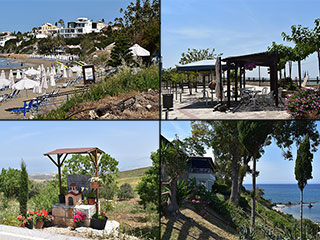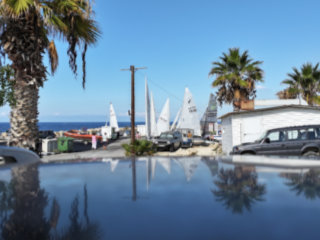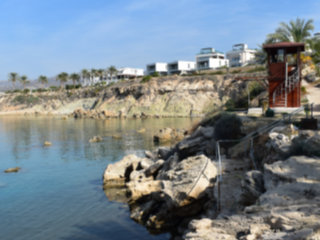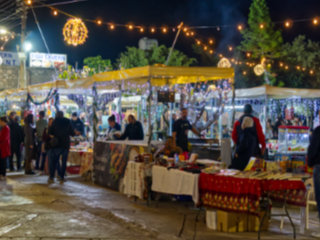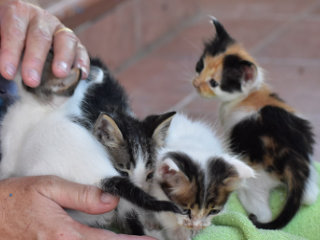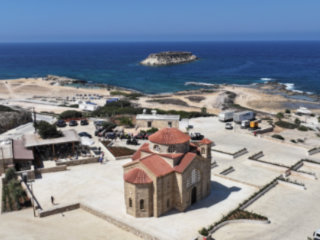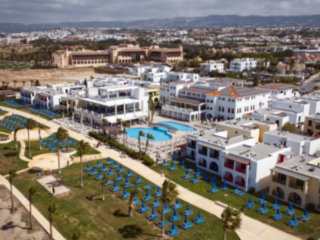Ancient Lemba
More from 2015

These two haven't changed much since 2015 though.

Comparison Shots
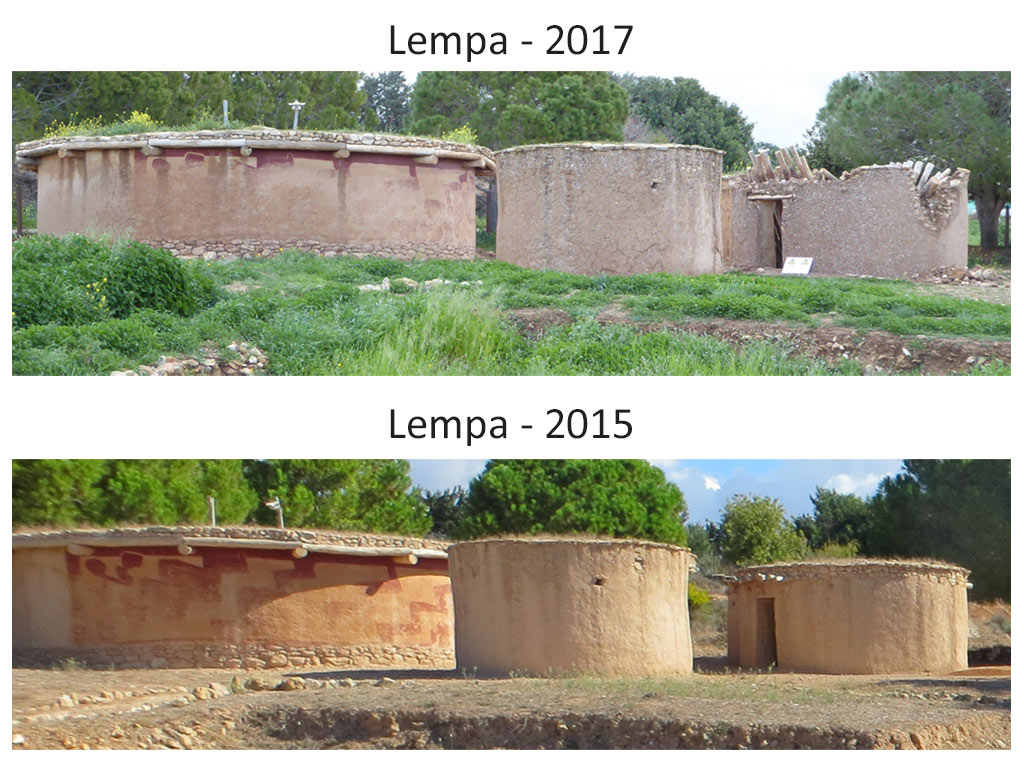
Comparing the two pictures side by side, we can see quite clealy how much the artwork has eroded as well. This is even more apparent if you compare it to a shot taken when the huts had first been built. Now, the second image in the picture below is of very low quality, but you can still see the difference. The quality is so low because I had to photograph the information sign from a distance using maximum zoom. I was able to get all the text as well though, and I have reproduced it to accompany the next two pictures.
Artwork in Decay
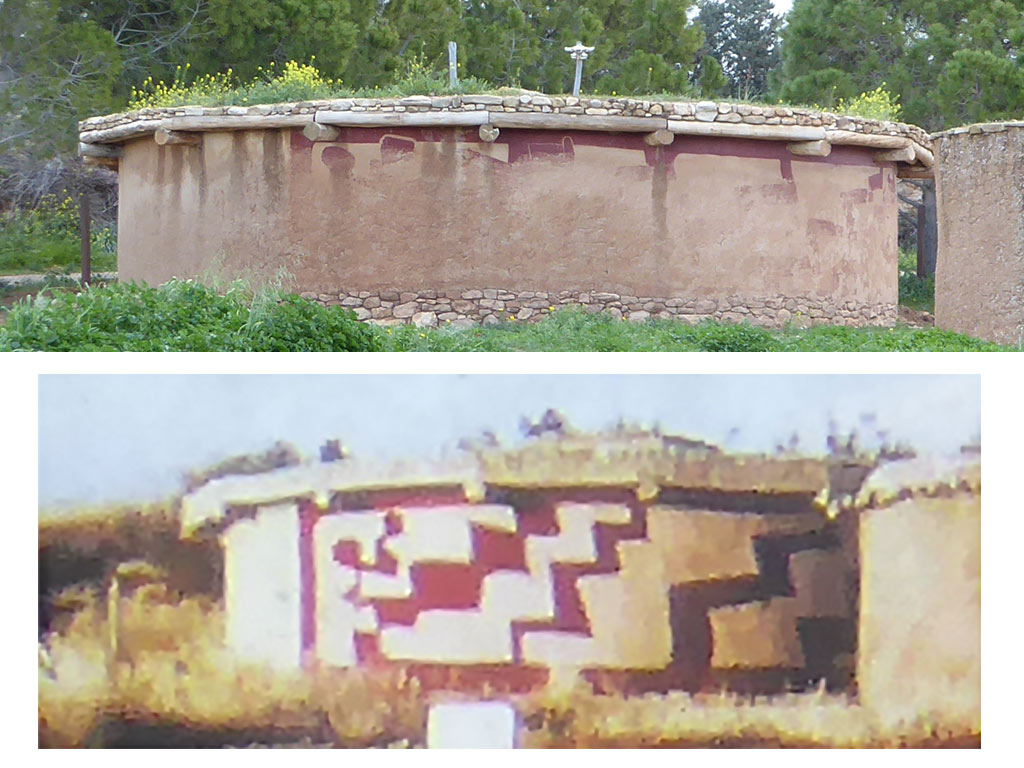
The Chalcolithi Village of Lempa
This site is a rare settlement of the Chalcolithic calture [sic], characteristic of the Paphos region, which lasted for about a millenium (3500-2500BC)
The village consisted of clusters of round houses built of stone and mud and had no defensive walls around it. It's inhabitants lived on hunting, fishing, herding and gathering and growing of various plants. They made tools in stone, bone and deer antler and knew pottery, stone and wood-carving, weaving and basketry. They also used a few small copper objects.
They probably worshipped a powerful fertility goddess who protected childbirth and infants. In particular this worship is evidenced by numerous female figurines made of clay and stone, especially picrolite. These were found in houses and in tombs, mainly of infant and women.
Images Relating To The Information Sign
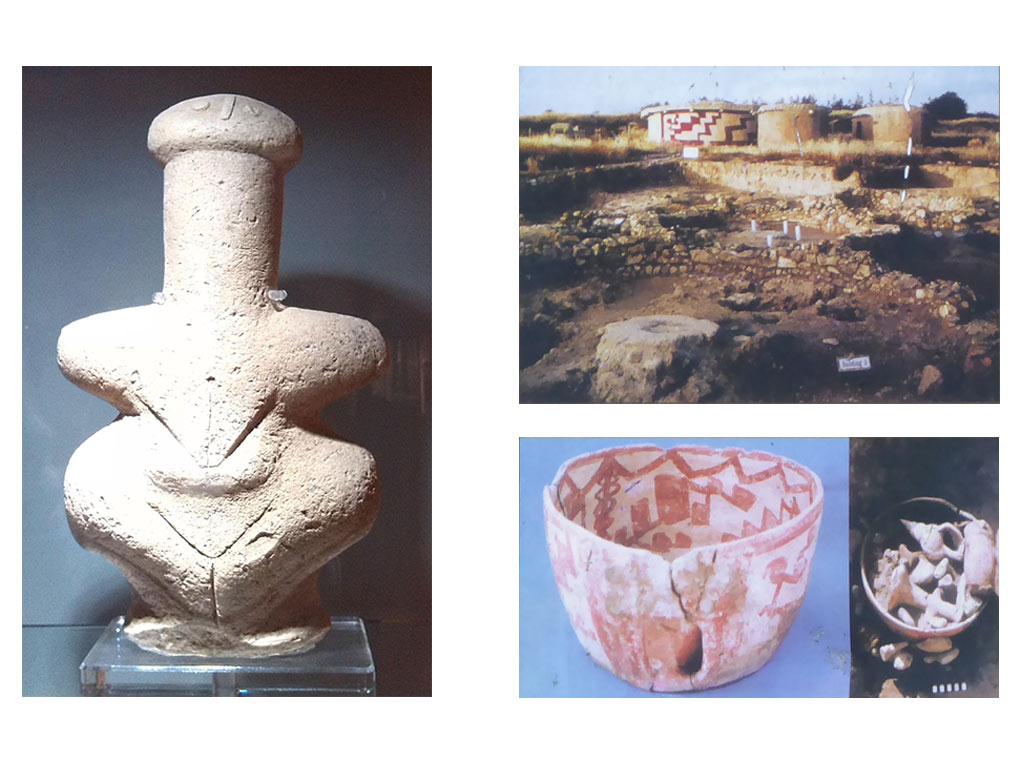
One of the largest and most important Chalcolithic statuettes is the so-called Lady of Lempa which was found in a round house (Building 1) of the settlement. The floor of this hous was divided into two parts: one made of earth the other, which looked like the official part of the building, paved with cement. The statuette was found on the ground at the point of division between the two parts.
The Lady of Lempa (3000 BC), newly in display in the Cyprus Museum, Nicosia, is 36cm high, made of limestone. She is a naked, pregnant woman with short, outstretched arms, a high phallic neck supporting er raised head. The fertility character of this statue is emphasized by the schematic rendering of her breasts, large hips and swollen belly. She may be considered a remote ancestor of the Paphian Aphrodite, since the cult of a powerful fertility goddess in the region may have survived through the centuries, to be revived in the shape of the paphian Goddess, later Aphrodite, worshipped at Palaepaphos.
The neighbouring site of Kissonerga loc. Mosphilia (not open to the public) is another, even more important settlement of the Chalcolithic culture. Many stone and clay female figurines have been found there. Of special importnace are a clay figurine of a woman giving birth and a model of a sanctuary or birth-hut (now in the Cyprus Museum, in Nicosia).
Meanwhile In Modern Lemba
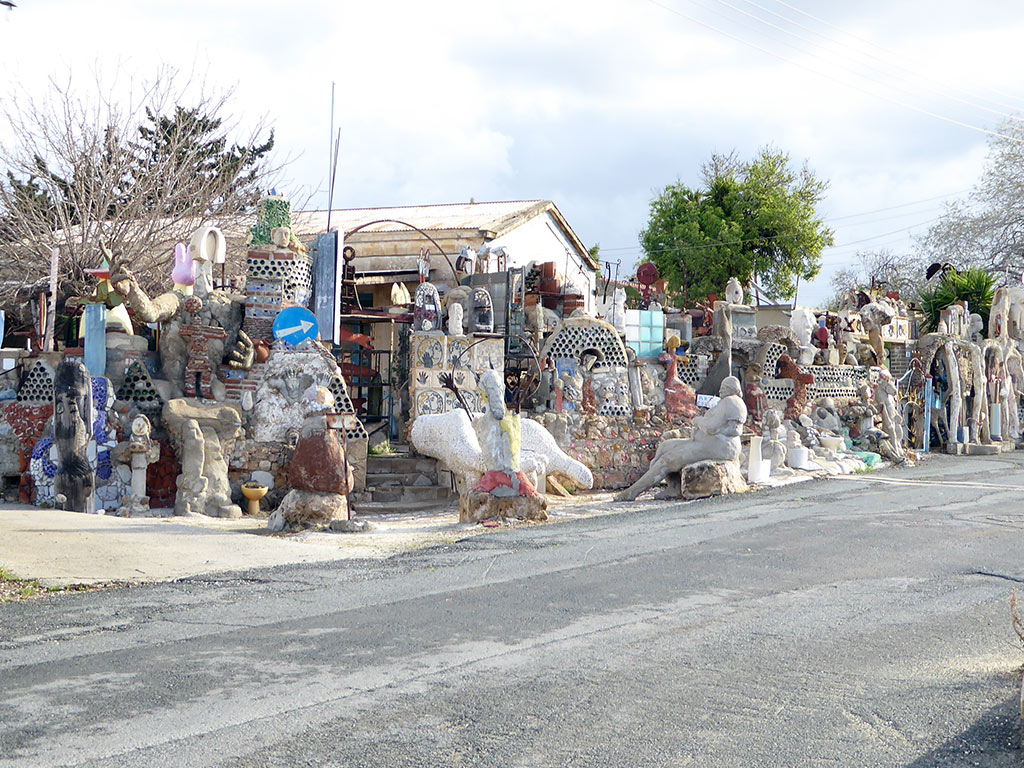
So, ancient Lemba does indeed need a bit of TLC. However, it does seem to be a work in progress. I won't bother putting a map up showing it's location. I will do another blog when they have finished though, complete with directions. It isn't the only thing to see in Lemba either. I shall be writing about this place soon...
Page 3 of 3


Related Blogs:
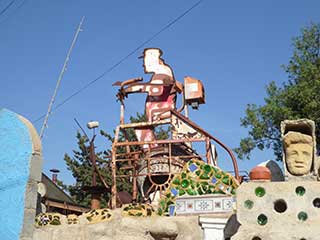
Lemba Art College
On our travels around Cyprus we have often stumbled across numerous random statues and quirky art exhibits. We first happened upon Lemba Art College in 2016, and if you like quirky art it is a must see location. We re-visited a couple of weeks ago and are pleased to see that the college is still a work in progress, as these photos will show...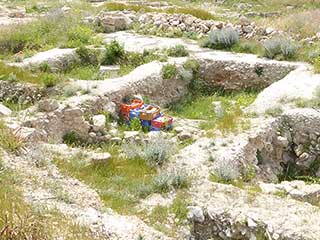
A Geroskipou Mini Mystery
After our last blog of the strange monument near Mandria, we were delighted with the response, so we thought we would post these pictures of another forgotten site, this time in the heart of Geroskipou. Did anybody work on this site in the past, and if so, can they say why excavation work seems to have halted mid dig?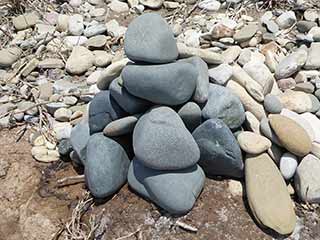
Mandria Mysteries
Today's blog is about a funny little place we found a few years ago while geocaching. It is also about some other relics we discovered while researching for this article. Together they demonstrate that you don't have to travel far from Paphos in order to find adventure. There are a number of mysteries here: What is the ancient monument? Why are the pill boxes so close together? Whatever happened to the Michalis Party Tavern? For more questions than answers, read on...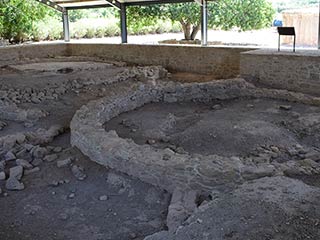
Kissonerga Mosfilia
Tucked away in the lower reaches of Kissonerga, lies a site of great historical importance. Similar in appearance to the ancient village of Lemba, which is currently closed for maintenance, Kissonerga Mosfilia is a perfect way to spend half an hour if you fancy something a little different. Like most of our findings, it was a happy accident that brought us to this ancient settlement. We were avoiding a roadblock and happened to pass this sign on our way to the coast road. Brown signs often signal something interesting, so we stopped to take a look...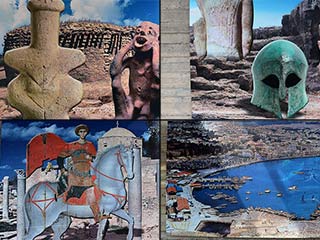
The History of Paphos in 16 Pictures
When I was out photographing a new statue in Old Paphos the other week, I stumbled upon a walkway I hadn't seen before. It descended to the lower carpark, by the Turkish Baths. The walkway was adorned with pictures telling the story of Paphos through the ages. Judging by the state of some of the pictures. they had obviously been there for some time, but this was the first I had seen of them. Here they are for your perusal...Good Pages To Visit
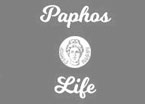
FB PagePaphos Life on Facebook
Like us on Facebook and stay notified of new blog posts.

FB PageOur Facebook Chat Group
Paphos Chat has been created for people who like our site and want to chat using Facebook. You can also easily upload photos of any size here. A lot of people are members of the Facebook chat group and the main forum. It's entirely up to you.
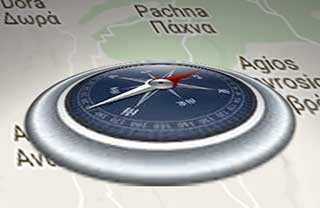
ListBlog Locations
Planning a day out? Then use our map of blog locations as a handy guide. Some of the places we visit our closer to each other than you might think, so take a look and start planning your next adventure...
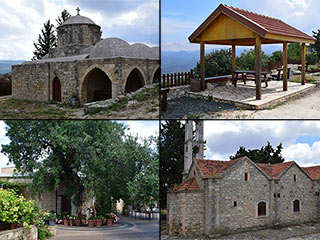
eBookCyprus Road Trip 01: the Kathikas - Panagia Loop
Let me take you on a journey around the region of Paphos, Cyprus. Starting at Paphos itself, we travel to Akoursos, then Kathikas, Kritou Terra and Simou. We continue past Lasa and Kannaviou, before taking in the delights of Panagia. Getting a bit more adventurous, we visit the abandoned villages of Statos and Agios Fotios, before passing through Choulou, Letymbou and Polemi, and rejoining the main Paphos - Polis road.
The route is suitable for all types of vehicle, and requires no off-roading. The guide contains about 130 photographs including shots of all the road signs you need to pay attention to, as well as some of the highlights you may experience along the way.
There are also several maps which will help you keep your bearings.
You can do this journey in a day, or you can break it up into chunks. You can also do it in reverse, to get some completely different views. It is entirely up to you.
